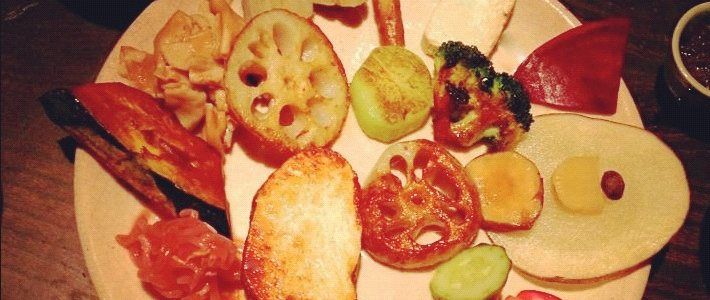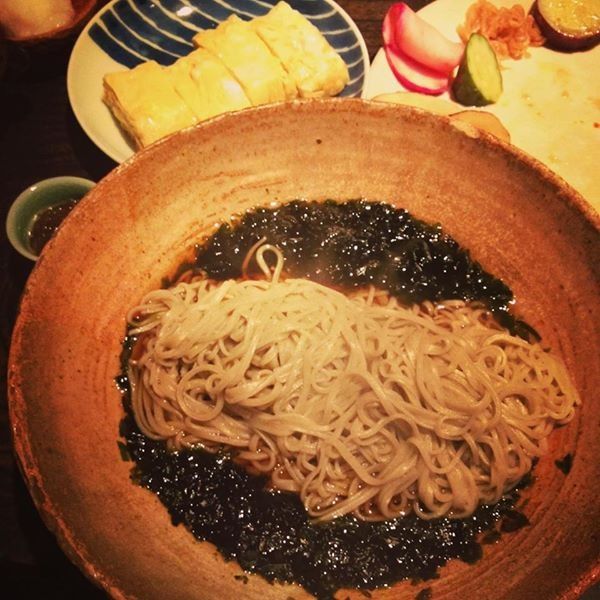
The Wind-Up Bean Chronicle: Living as a Vegetarian in Japan
Culture Lifestyle- English
- 日本語
- 简体字
- 繁體字
- Français
- Español
- العربية
- Русский
Culinary Culture Shock
When I first came to Japan over a decade ago, I must admit that I had done embarrassingly little to prepare myself in terms of learning the language. I had also given scant thought to the potential difficulties of dwelling here as a vegetarian. My limited experience of Japanese cuisine only stretched as far as the occasional lunchtime purchase of vegetarian sushi from Marks & Spencer, but I was as excited by the vague notion of new culinary vistas as by all the other aspects of my move halfway around the world.
It was on my second day in the country, when an A4 sheet of “useful Japanese phrases” was handed out to the assembled rookies at the orientation session for my new job, that I realized things might not be plain sailing. The trainer asked if there were any vegetarians present and drew careful attention to the phrases aimed at we lentil-munchers, but cautioned that when deployed in real-world situations, even these might not be enough to communicate our specific dietary requirements to waiters and waitresses.
It took some time, and much trial and error (with an emphasis on the latter), to grasp precisely what morsels my strict, self-imposed dietary code would permit me to partake of. After all, even when a dish bore no conspicuous evidence of meat or fish, the vast majority of traditional washoku contains at the very least some sort of fish stock. Combined with the limitations accompanying my functional illiteracy in Japanese, this made it difficult to judge what was what. And all of this was compounded further still by the fact that the concept of vegetarianism is not widely understood among the Japanese population.
A Lost Vegetarian Tradition
In 11 years here, despite socializing predominantly in what might be described as environmentally and socially conscious circles—in which a strikingly high proportion of associated expats follow meat-free diets—I have met only two bona fide Japanese vegetarians. The Facebook group for the Japan Vegetarian Society boasts only 78 followers, compared with over 22,000 for its UK counterpart. Although precise data is hard to come by, a cursory swoop online suggests that roughly 10% of the American, British, and Italian populations follow a largely vegetarian diet, and even these high figures are dwarfed by the 30% of Indians who eschew meat—some 400 million people. In India, though economic factors are also significant, this is predominantly for reasons of religion. Western vegetarians are more of a mixed bunch, harboring a variety of faith, health, and ethical motives. Fashion also plays a part, and the influence of various celebrities—particularly musicians, from punks like Fugazi to household names like Morrissey or Paul McCartney—is clear. Such reputable standard bearers for the lifestyle make quite a contrast with the few outspoken vegetarians in Japan, who include somewhat eccentric characters like the experimental musician Haino Keiji and the writer/musician Sunplaza Nakano-kun.
All this may seem strange when you consider that Japan has the vibrant vegetarian heritage of shōjin ryōri, which stretches back to the popularity of Zen Buddhism during the Kamakura period (1185–1333). Measures to preserve this tradition were a part of Japan’s successful 2013 bid for UNESCO Intangible Cultural Heritage recognition for washoku. It’s easy enough for vegetarian tourists to get by in any medium-sized or larger city by falling back on the many Indian, Italian or Turkish restaurants. But the most frustrating thing for a Japanophile vegetarian can be the difficulty in finding an authentically Japanese culinary experience to accompany the kabuki, tea ceremonies, and temples—especially when visiting more provincial areas.
Infrastructure Required
 Hand-rolled, vegetarian-friendly soba at Asahi in Higashi Kitazawa.
Hand-rolled, vegetarian-friendly soba at Asahi in Higashi Kitazawa.
Thankfully, I by now have my own dossier bursting with restaurants that fill this gap. While many of these are in relative bohemian strongholds like Kichijōji (healthy teishoku set meals at Monk’s Foods, contemporary macrobiotic washoku at Hitoto) and Setagaya (vegan soba at Asahi, organic rusticity at Nōmin Cafe; Japanese language only at these links), there are also enclaves in fashionable Shibuya and Omotesandō. The rate at which long-established eateries are being joined by newer venues is an encouraging sign. Such trends suggest that the idea of vegetarianism is gaining some traction in Japan—if not as a committed lifestyle choice, then certainly as yet another dining option for the health conscious or the merely curious to explore and enjoy.
Yet the lack of a well-publicized, regularly updated database of vegetarian restaurants remains an issue, particularly for non-Japanese speakers and those who don’t have the time to build up their own local knowledge. Although several attempts have been made to provide such a service, they always seem to start strong and then fall by the wayside. With one eye on the 2020 Olympics and the Japanese government hoping to welcome as many as 30 million overseas tourists a year to the country by 2030, the establishment of the infrastructure to ensure that vegetarians—as well as others with religious or allergy-related dietary restrictions—can enjoy the full Japan experience is a vital, yet overlooked, aspect of that much-vaunted omotenashi, the Japanese spirit of hospitality.
(Banner photo: An assortment of seasonal vegetables at Asahi, Higashi Kitazawa.)
▼Further reading
 Tokyo Camii: Japan’s Biggest Mosque Tokyo Camii: Japan’s Biggest MosqueOpening the Doors to Islam in Japan |  Top Tempura Chef Kondō Fumio Top Tempura Chef Kondō FumioThe Michelin-Starred Chef Who Lifted Tempura to the “Pinnacle of Cuisine” |  Power Lunch at Japanese Schools Power Lunch at Japanese SchoolsEducating the Next Generation’s Taste Buds |